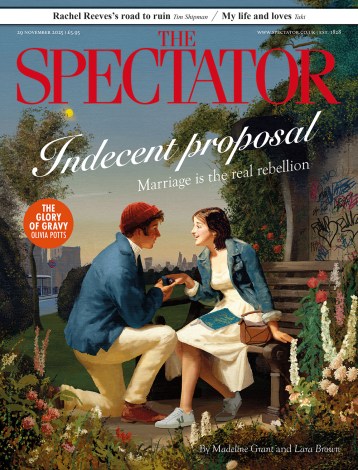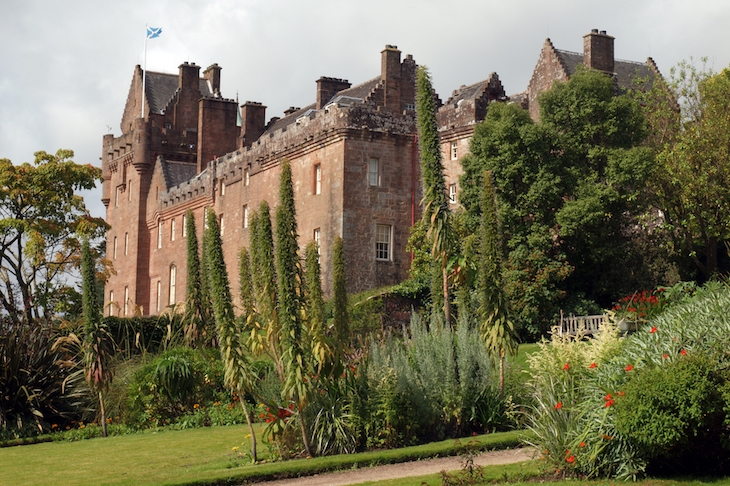Arran, in the Firth of Clyde, is an island whose charms vary with the seasons. In summer, the hills are verdant. By midwinter, there is a grandeur of rock and snow. These days, the attractions are enhanced by a better class of visitor. Time was, when it suffered from proximity to Glasgow, but the Gorbals-ites who want to start the morning with a cocktail of Buckfast and Irn-Bru now do so in Torremolinos.
So: gentle sounds, sweet airs and a formidable amount of history. For centuries, Arran was on the front line in the constant warfare between Norsemen, Gaels, the lowland kings of Scotland and aristocratic factions. It is near Campbell territory: never a safe place to be. When it came to looting, burning and slaughtering, the Campbells could have given tuition to the Vikings.
Today Brodick Castle is peaceful: a fortress turned into a great house. But its various castellans withstood many a siege until they were confronted by foes who could overmaster the mightiest warrior: the Inland Revenue and the National Trust. At one stage, the Dukes of Hamilton owned the castle and most of the island. Benefactors who have never been given enough credit, they encouraged crofters to move to Canada. The so-called Highland Clearances are one of the most misrepresented events in all history. Because of them, a splendid race of men whose abilities and energies had frequently been sacrificed in an unrelenting struggle for subsistence and survival had their prospects transformed. Across the ocean, they found land, in many cases leading to riches, plus the opportunity to help build a new nation, for it would be reasonable to describe much of Canada as Nova Scotia (v. Robertson Davies, passim).
Less fortunate Highlanders ended up in Glasgow’s urban squalor. They did play an indispensable part in manning the Industrial Revolution. But in so doing, they often degenerated into a stunted, spavined, tubercular race of slum–dwellers, though they never lost contact with their martial past. The regiments which recruited them were all able to claim that honoured accolade, The Poison Dwarves. So, alas, were the Barlinnie Fusiliers.
In the centuries when the rule of law could not prevail against the insurgencies of musket and claymore, the inhabitants of Arran often took advantage of anarchy. The island had at least as many illicit distilleries per capita as any other part of Scotland. In the 1990s, some investors decided to revive that aspect of Arran’s heritage, though within the law. They set up the Arran distillery, which is now marketing excellent malts.
I tried some the other night at a Burns Supper. The host was my good friend Ranald Macdonald, which was appropriate. His ancestors were on the losing side in the Battle of Largs, just across the water from Arran, which helped to shape the destiny of the Highlands and deprived the Macdonalds of Clanranald of the Lordship of the Isles. Naturally, haggis was prominent. Ranald, whose restaurants consume five tons of the great chieftain every year, buys his in the Borders from Blackface Meats, who might well be the best butchers in these islands, or indeed the world. Their haggis is dry but succulent, an admirable blend of oatmeal, sheeps’ pluck and spices.
The whiskies resemble Speyside products, not the peatier bottles of the islands to the west. The Arran distillers are whisky intellectuals, passionate about their cask, constantly seeking to harmonise tradition and innovation. The results were impressive. We drank the Robert Burns Single Malt, the Bothy Quarter Cask (my favourite), the 18-year-old single malt and finally a whisky from Amarone casks, which I found less convincing. But all in all, this is serious stuff, which every whisky drinker ought to try.






Comments